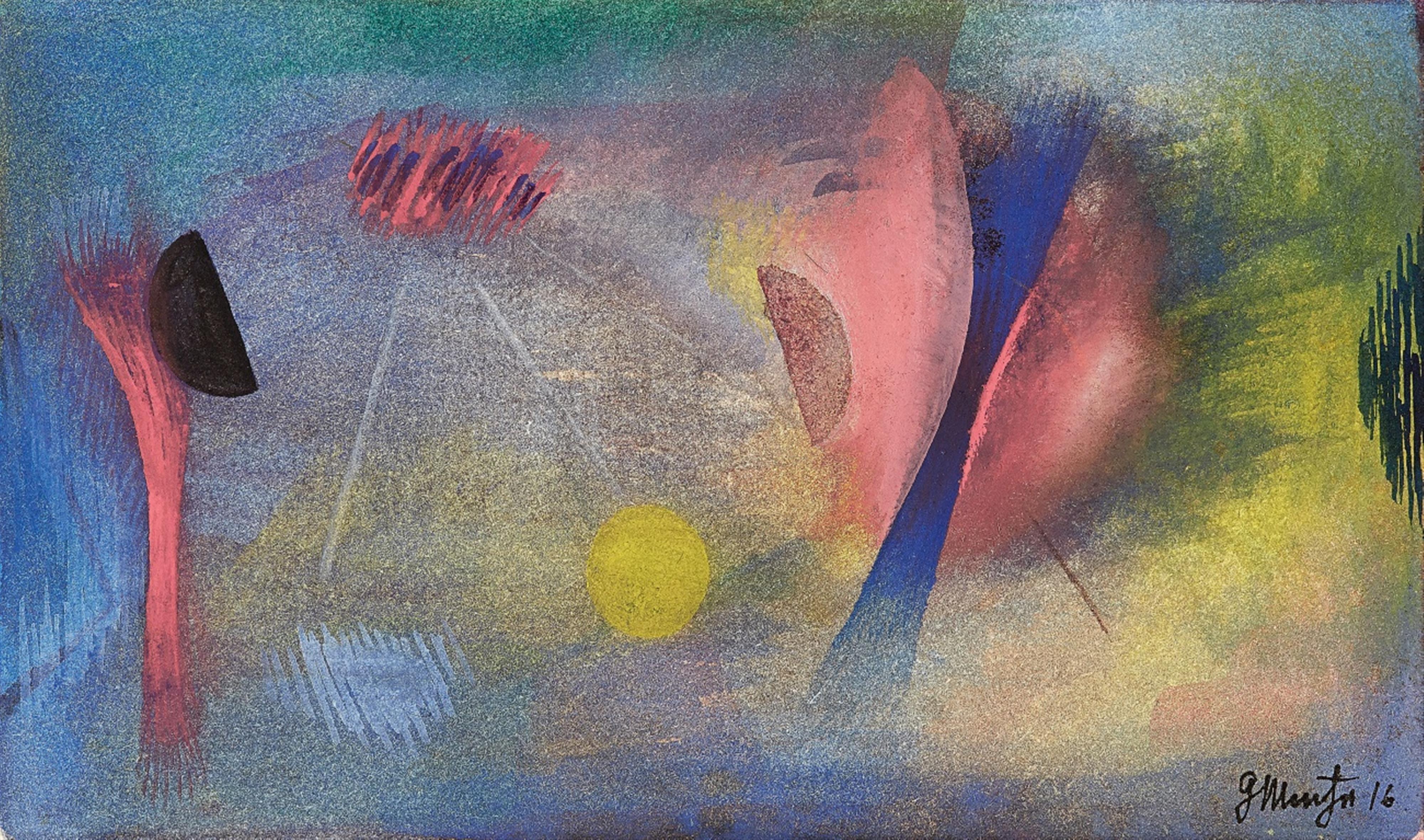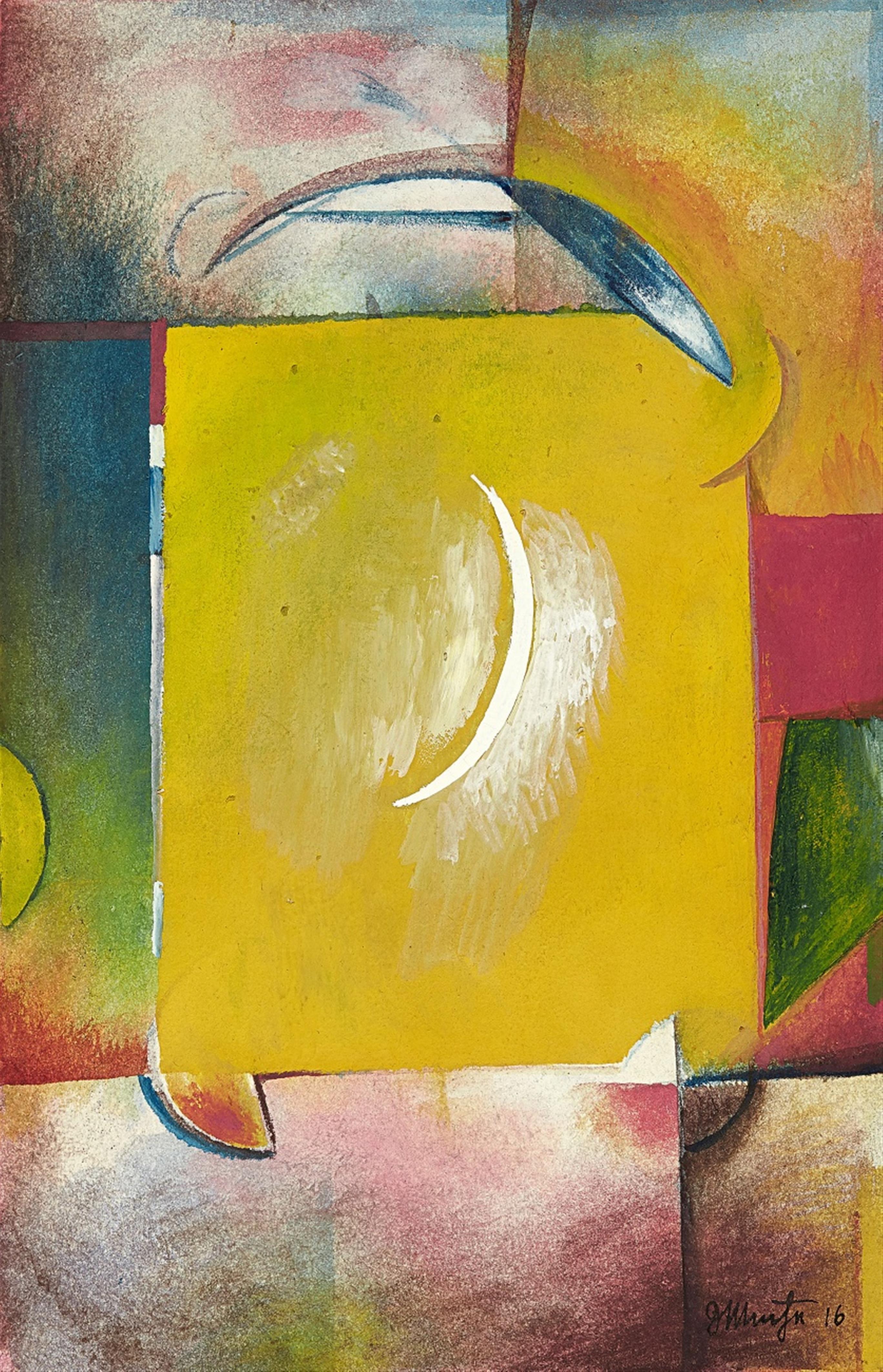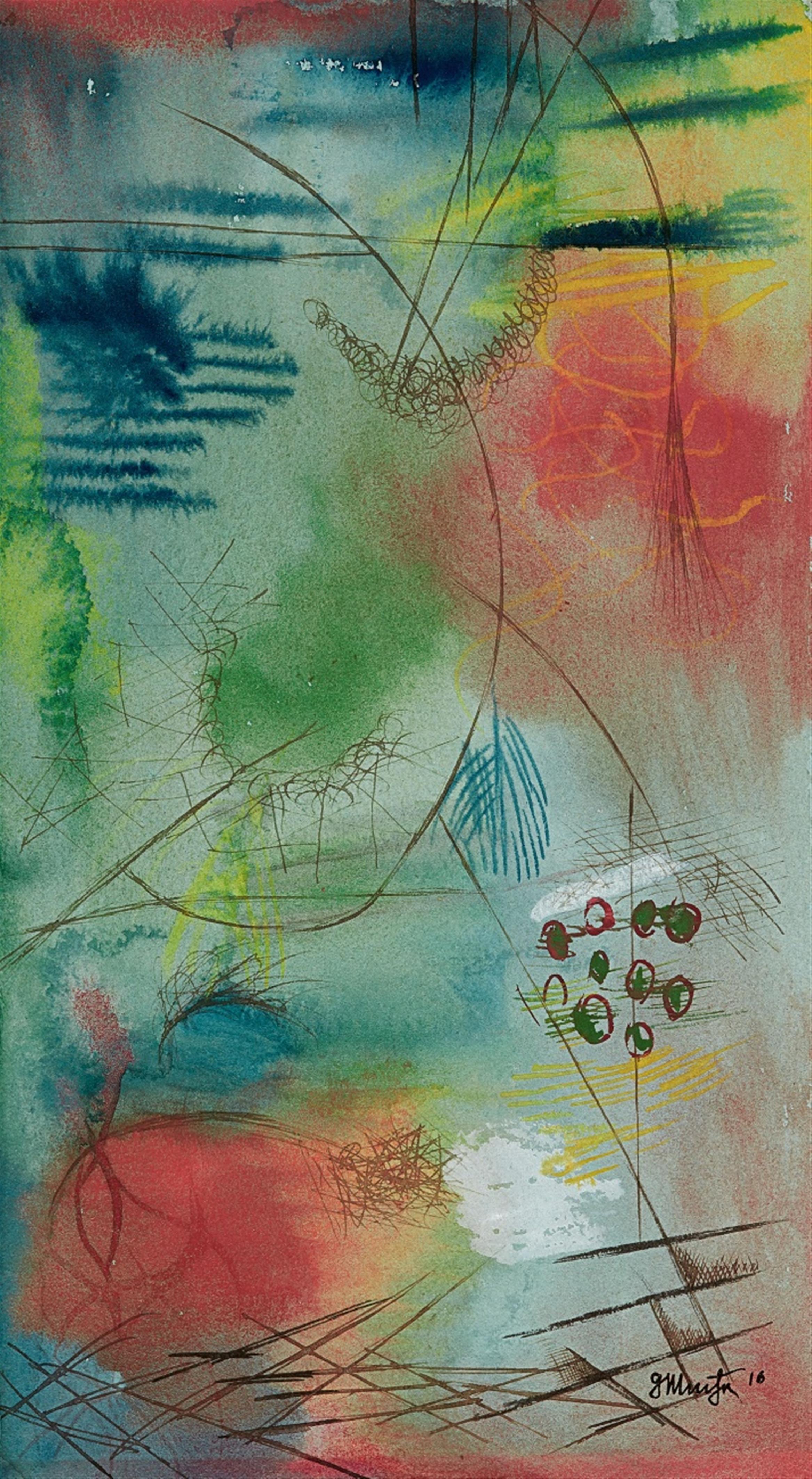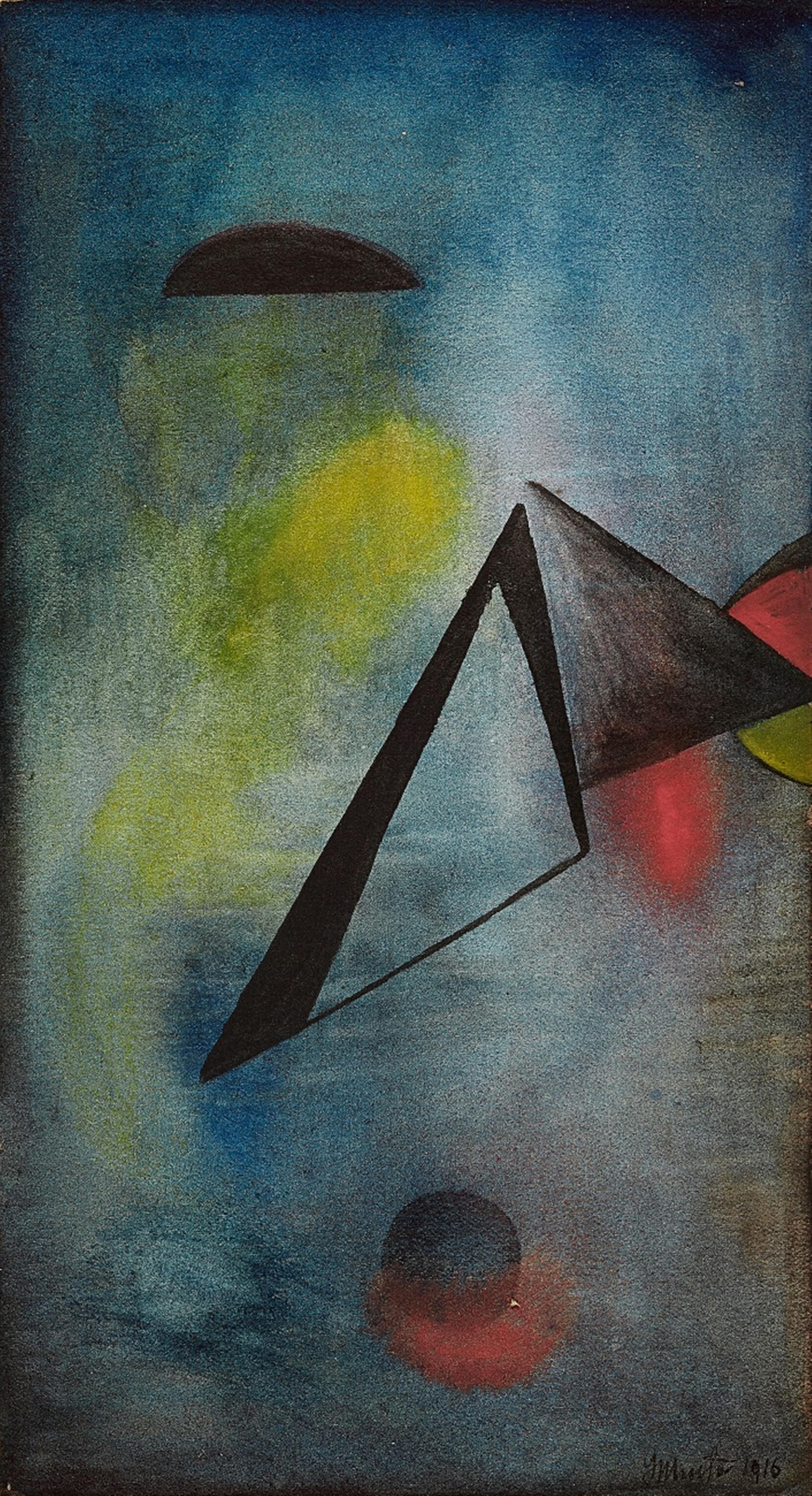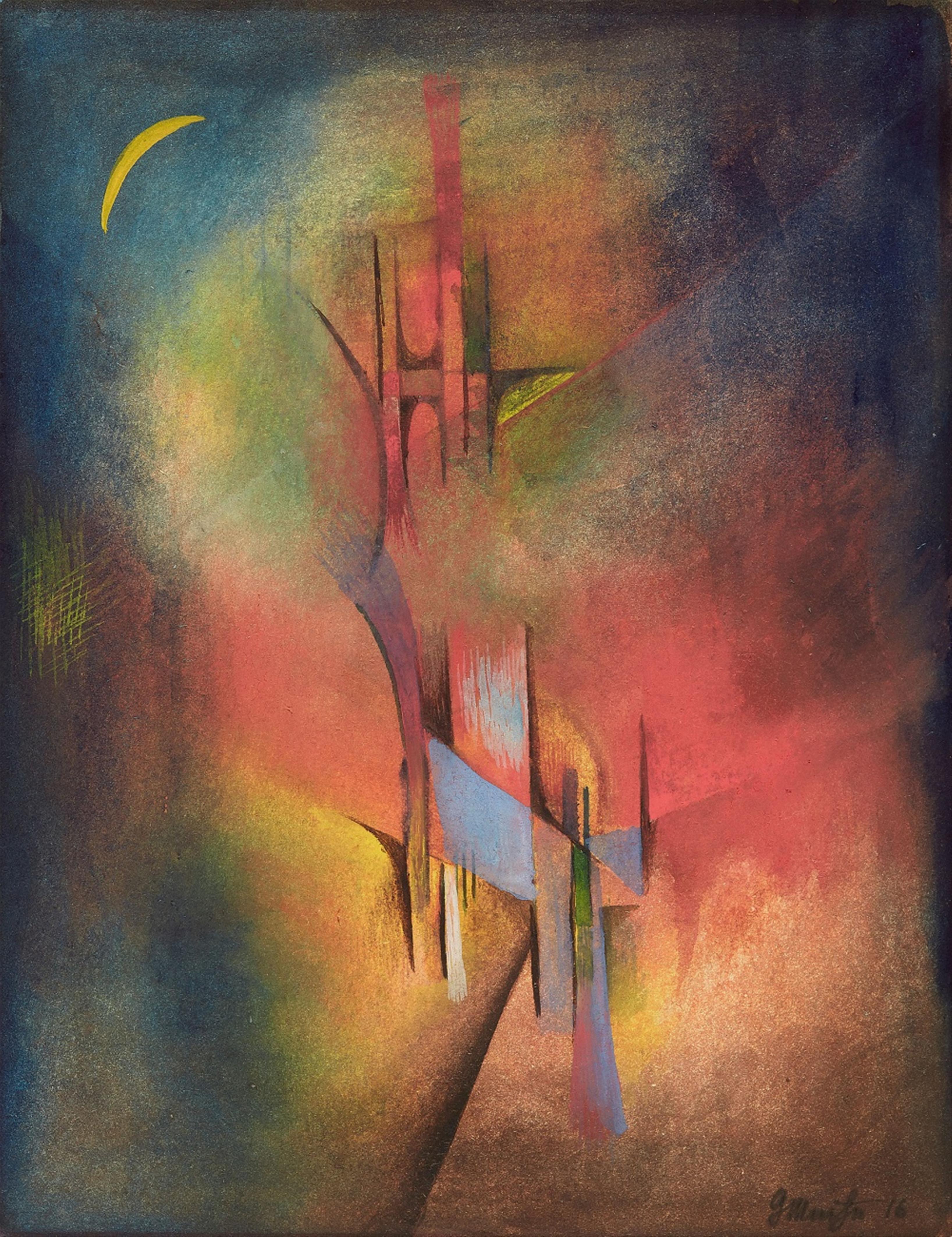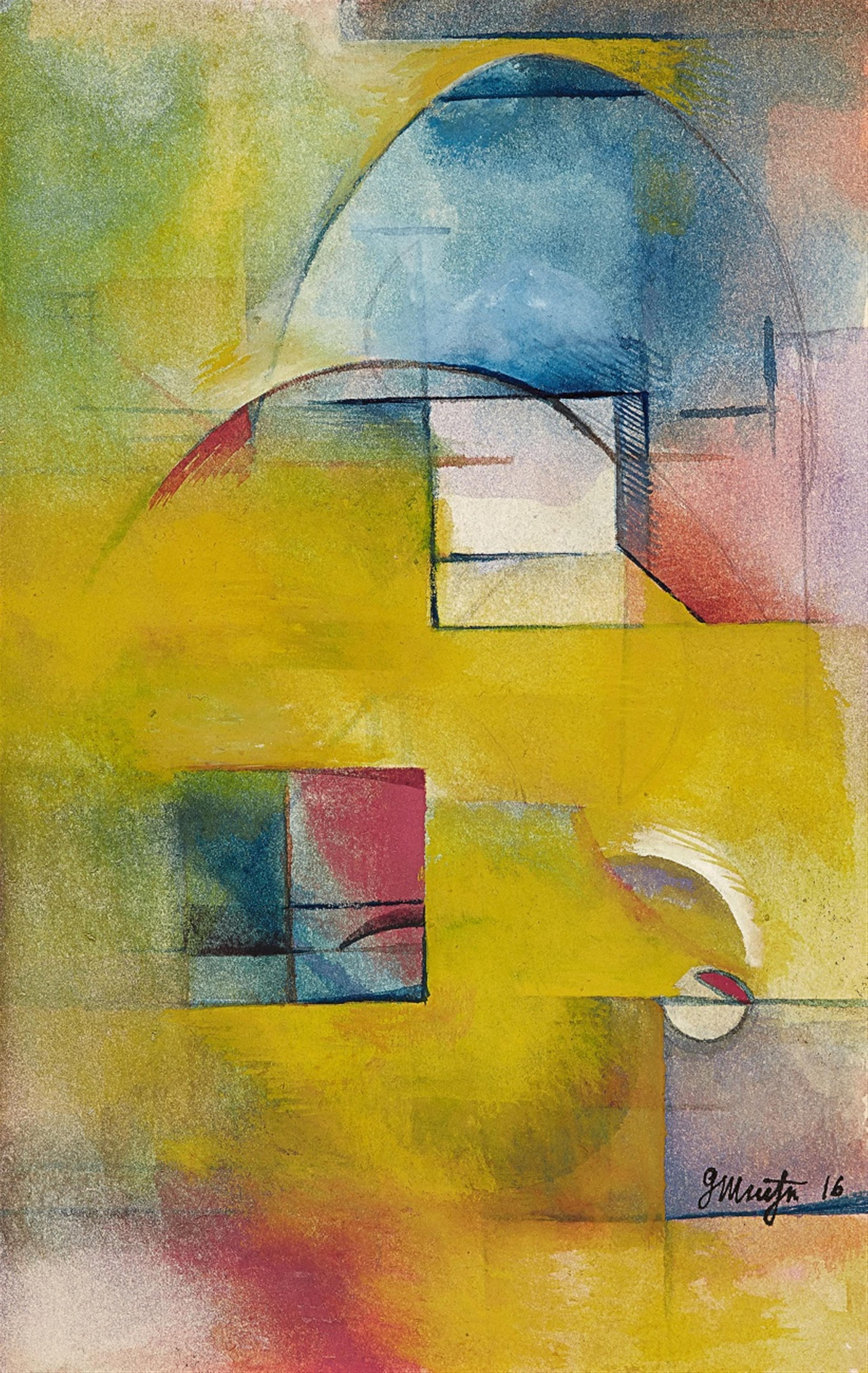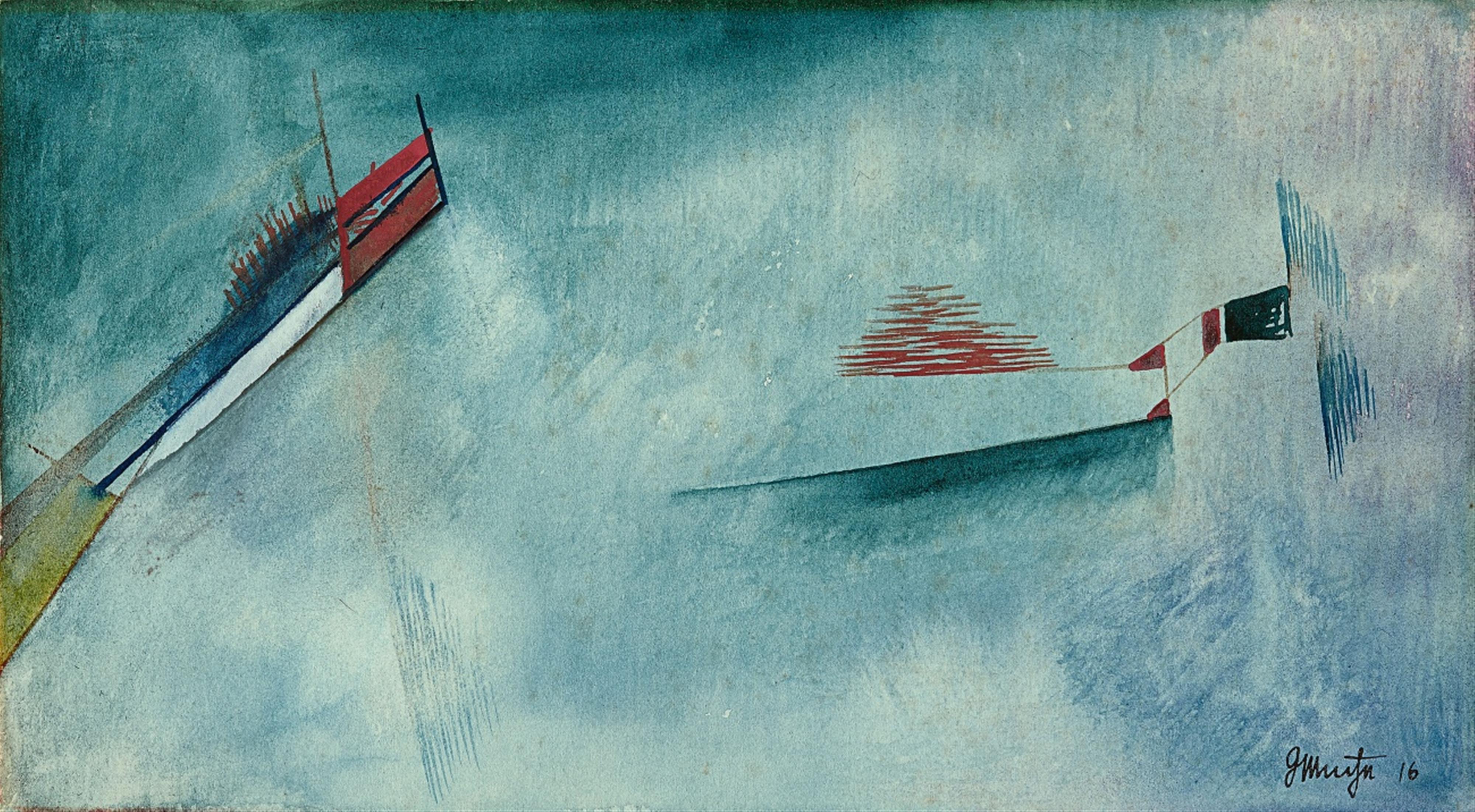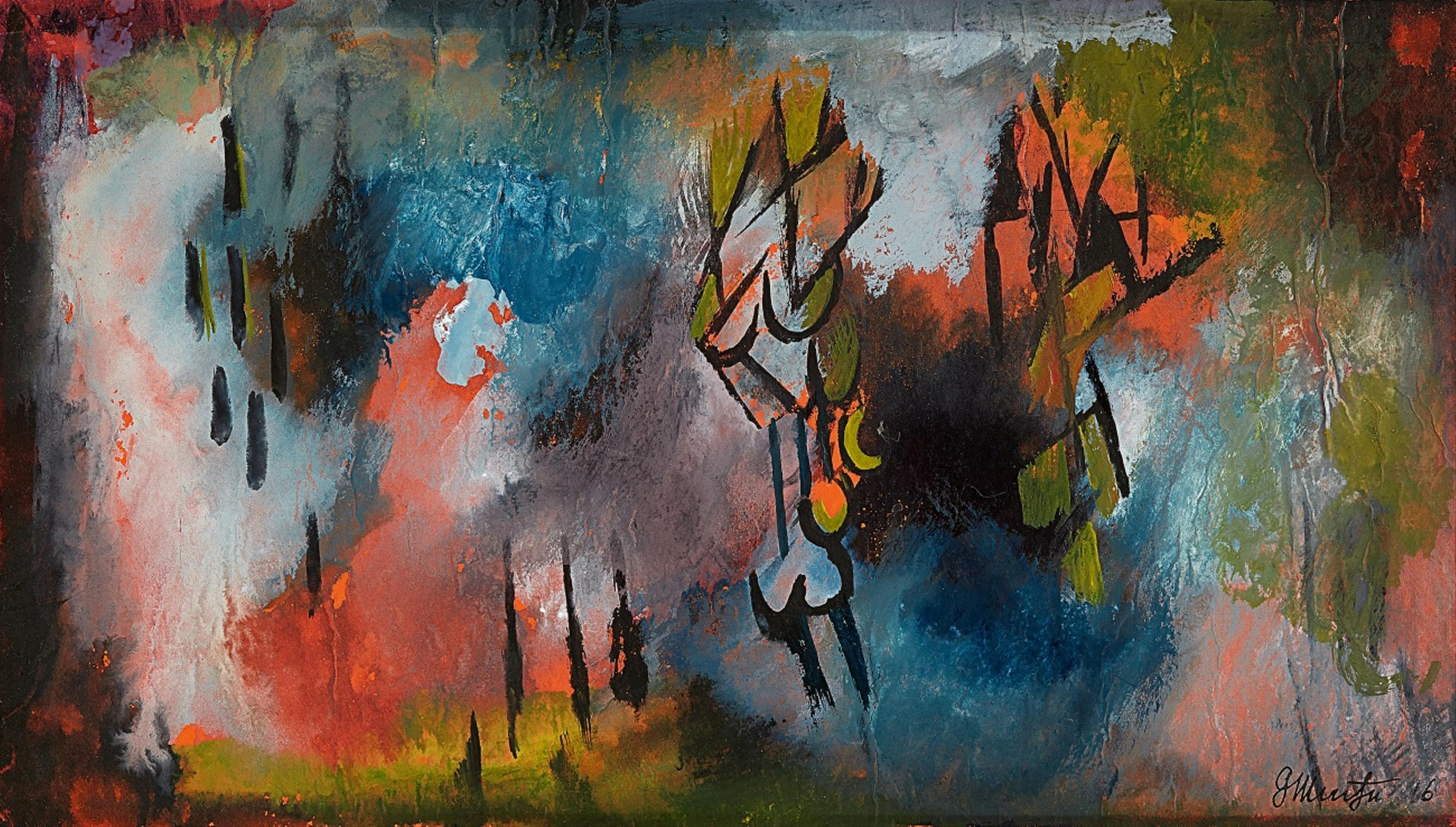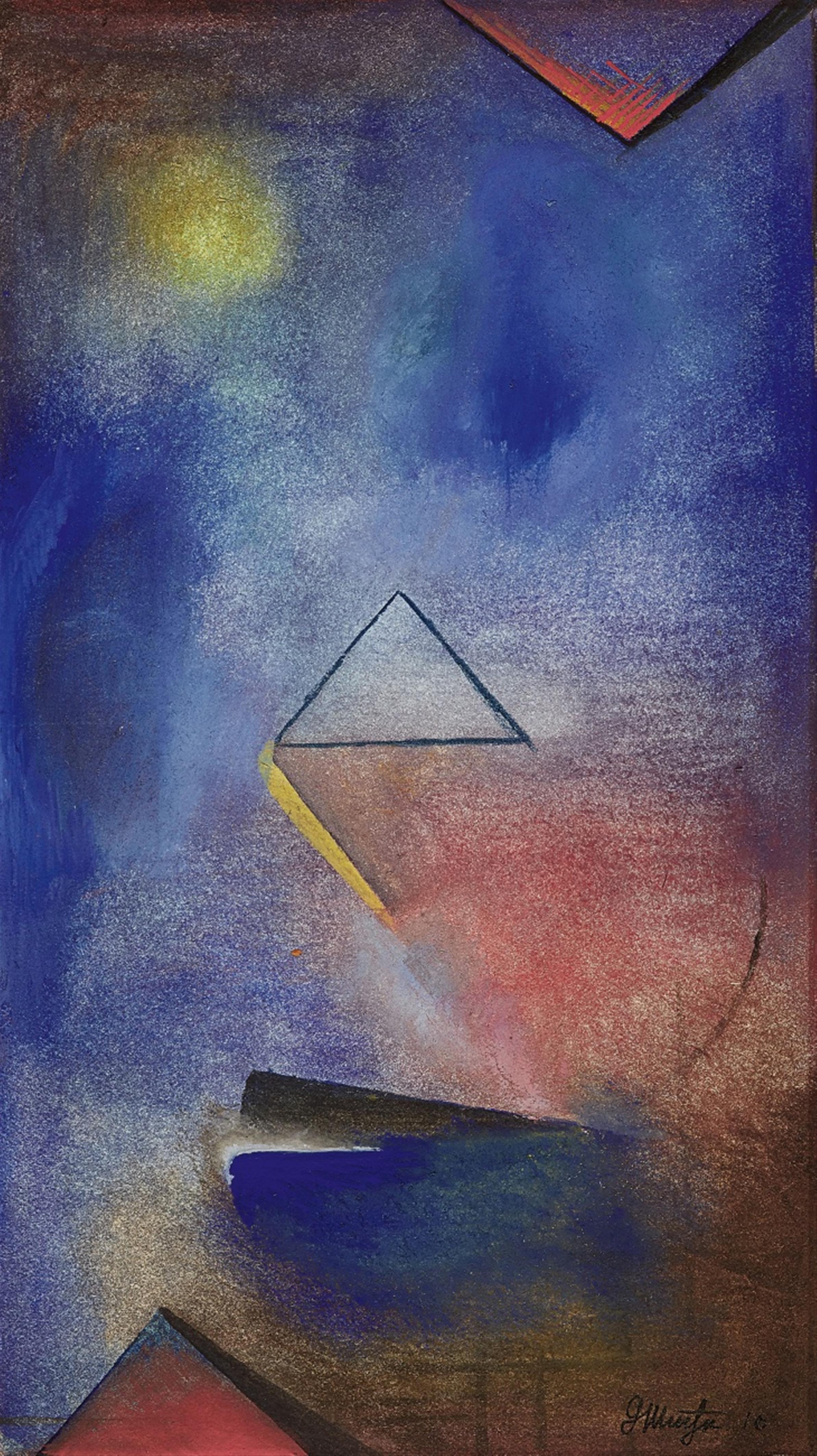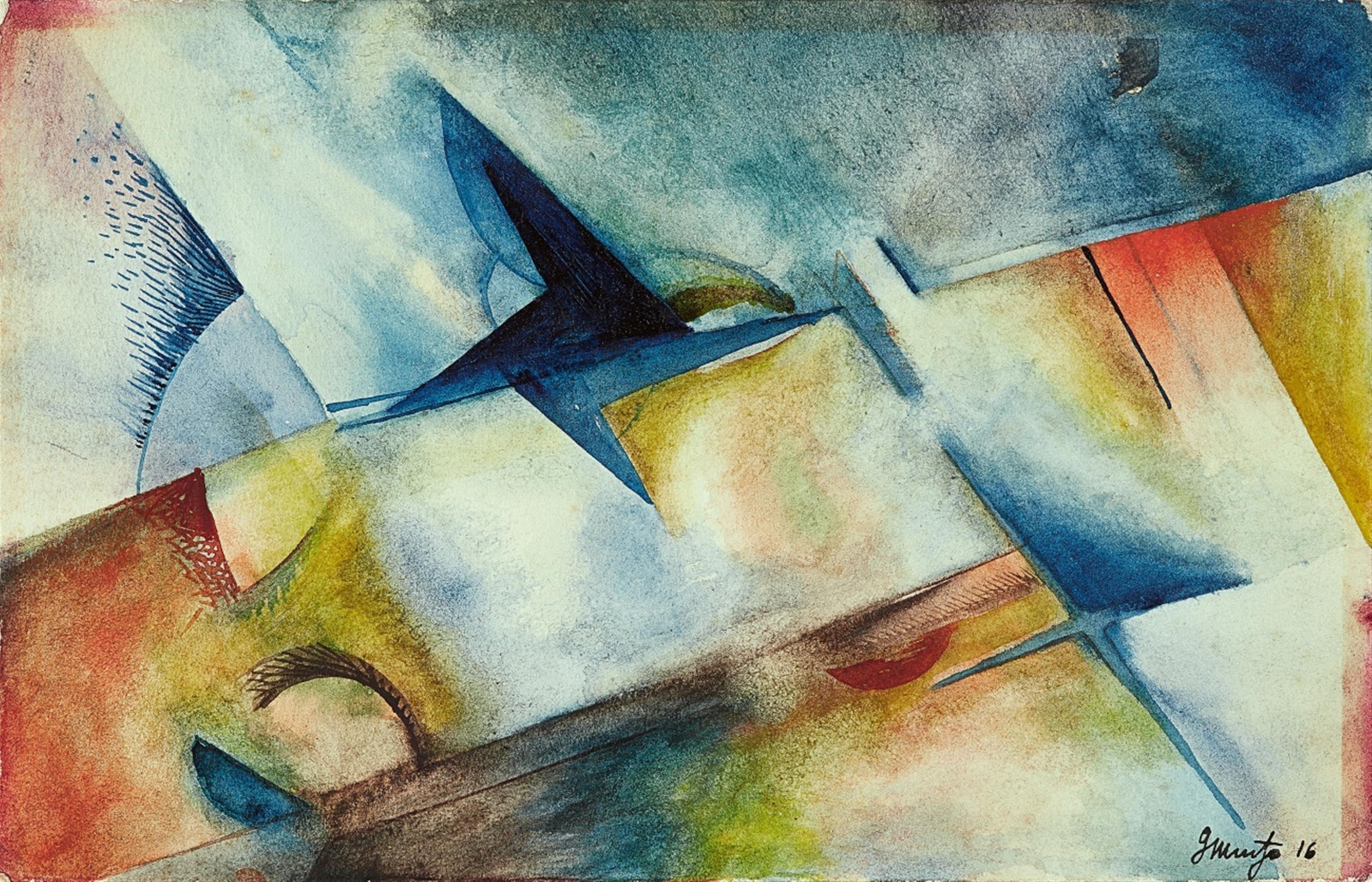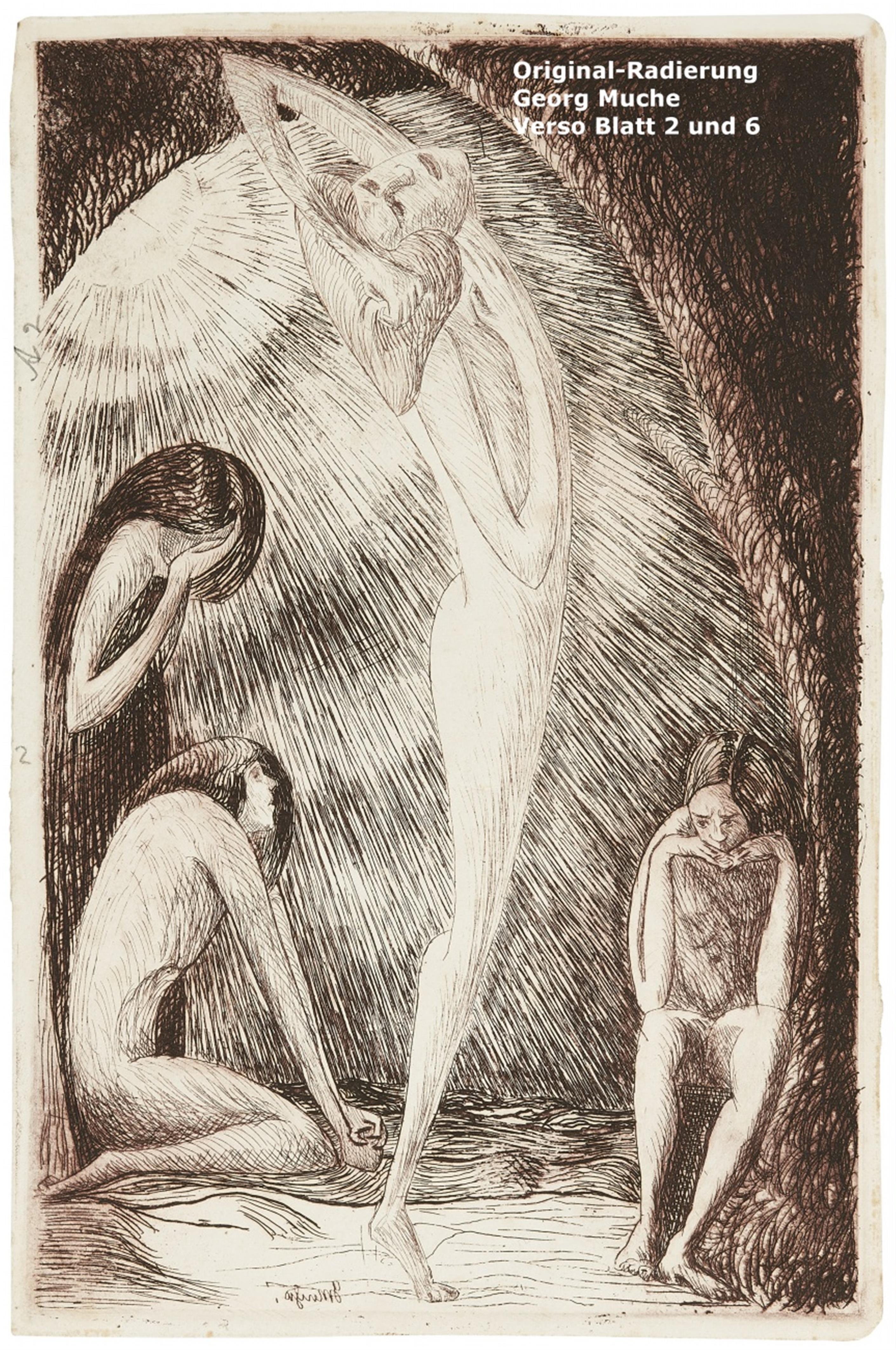Georg Muche
Zehn Leuchtperpendikel
1916
Series of 10 watercolours, some with gouache, on various, partially coloured papers. On verso some with sketches in pencil resp. with ink or watercolour; 2 sheets with an early etching by Georg Muche verso (1914, not recorded by Schiller) From 10.2 x 16.7 cm to 15.4 x 24.6 cm (4 of which in landscape format) Each framed under glass. Each signed and dated 'GMuche 16' resp. 'GMuche 1916' in black India ink lower right. Each with sheet numbers in pencil verso. - Overall In fine condition with vibrant colours; the paper partly with slight traces of age. - The inscriptions in pencil on the back of each frame by an unknown hand.
For Georg Muche the gallery "Der Sturm", which Herwarth Walden founded in 1910, was an art Mecca: it is in Berlin where the young artist encountered the contemporary international avant-garde. In 1914, following his studies in Leipzig and Munich, Muche moved to Berlin, where he visited museums, galleries and, for the first time, the “Sturm”. There he saw works by Jacoba van Heemskerck, which would stylistically influence his early work as a painter. However, it was particularly to the works of Wassily Kandinsky, Franz Marc, August Macke, Lyonel Feininger and Paul Klee that Walden would introduce Muche. After these encounters at the “Sturm”, which followed an initial synthesis between academic figuration and his first abstract experiments, Muche developed luminous chromatic harmonies - constructivist compositions which dealt with his elder contemporaries, which would influence his own pictorial idiom and which would accompany him to Weimar. He was one of the first artists whom Walter Gropius offered a position at the “Staatliches Bauhaus” opening in Weimar at the end of 1919; as one of it's first teachers, from the spring of 1920 Georg Muche alternated with Johannes Itten in heading the preliminary course (Vorkurs) and serving as master of form (Formmeister) for wooden sculpture and weaving. His organisational contribution was also significant: he headed the commission in charge of the first Bauhaus exhibition in 1923 and designed the first piece of Bauhaus architecture in Weimar - the legendary “Haus am Horn”, built by Adolf Meyer in the same year.
The radicalism with which Muche also changed his painting is remarkable and can be wonderfully grasped through these colour drawings dated to 1916, possibly arranged some time later to a sequence for the collector. The studies occupy themselves with abstract forms in space, explore interrelated structures and culminate in compositions featuring various accumulations of forms. Colour played a paramount role for Muche as he engaged with what were then new theories of painting: as though floating in the coloured firmament that forms the sheets' ground, the abstract elements luminously advance in the foreground or disappear into the imaginary space behind it. Muche's intention of bringing colours and forms into a balanced harmony and equilibrium (“Perpendikel”) is plain, and these sheets - which were created almost simultaneously, but executed in different techniques - also demonstrate his mature engagement with a theme which dominated that period: abstraction.
Muche linked colour with light ("Leuchtperpendikel"), whose distinctive qualities and effects he first examined in the compositions of 1916 to 1918. Magdalena Droste described these paintings and watercolours as an early pinnacle in his development as an artist: “Both his idiosyncratic use of colour and light and these spaces created within the picture are essential characteristics of Muche's early pictures.” (M. Droste, op. cit. 1980, p. 20).
Catalogue Raisonné
Droste M 33 (all depicted)
Certificate
We would like to thank Magdalena Droste, Berlin, for kind scientific advice.
Provenance
Acquired directly from the artist; Private collection Rhineland, in family possession since
Literature
Magdalena Droste, Georg Muche als Maler, in: Georg Muche. Das künstlerische Werk 1912-1927. Kritisches Verzeichnis der Gemälde, Zeichnungen, Fotos und architektonischen Arbeiten, published by Bauhaus-Archiv, Berlin 1980, p. 19; for the etching verso of two watercolours cf. Droste M 47, p. 96 with illus.
Exhibitions
Mülheim a.d. Ruhr/Krefeld/Konstanz 1963 (Städtisches Museum/Kaiser-Wilhelm-Museum/Kunstverein), Georg Muche. Gemälde, Graphik, Zeichnungen aus den Jahren 1915-1963, cat. no. 44 with colour illus. of one of the works; Munich 1965 (Städtische Galerie im Lenbachhaus), Georg Muche. Gemälde, Zeichnungen, Graphik, cat. no. 12-21; Dessau 2002 (Meisterhaus Muche), Georg Muche im Meisterhaus Dessau, Bilder aus Privatbesitz 1913-1968, without cat.

